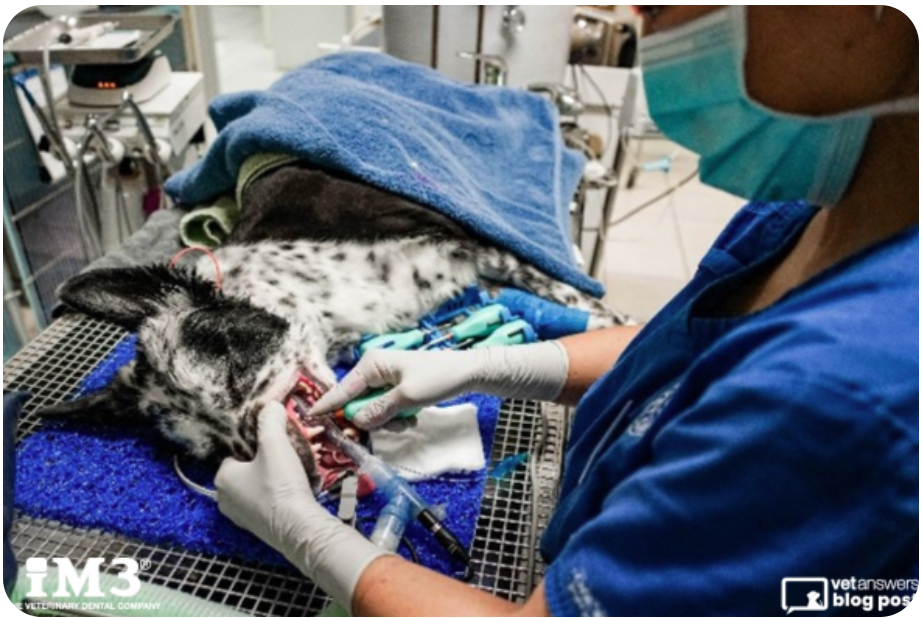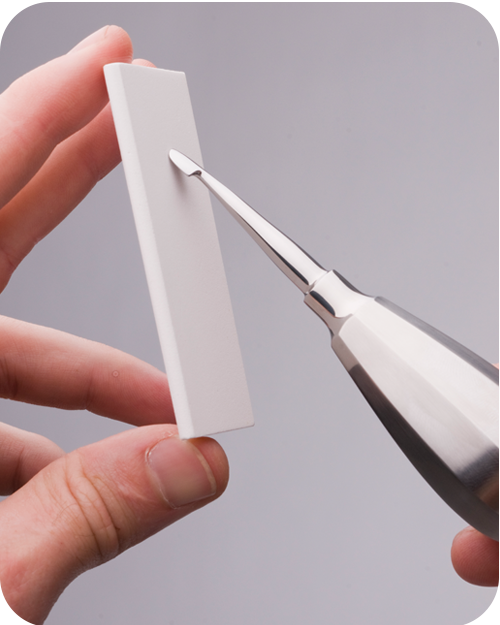Part 1: Review Your Instruments
Practical Tips Series to Improve Your Efficiency in Veterinary Dentistry
by Maggie Burley, Clinic Support & Education, iM3 | 18 Jul 2024

Having the right tools for any job is paramount to its execution – ever tried undoing a screw with a knife-tip because you couldn’t find the screwdriver?? Well, the same goes with dentistry. If you haven’t got the right instruments, the procedure will become more challenging, and you will lose time.

1.Consider Your Patients
Your review starts with considering the patients you commonly treat. Are you a feline-only clinic? Do you treat Rabbits along with Cats and Dogs? Do you see a spread of both small patients (<10kgs) and large patients?
Now look at your instruments – do you have the range of instruments needed treat the species that you see (yes, they differ between species!). Do you have all the sizes of instruments to suit your patients?
A good example of this are Periosteal Elevators as there is a fine size that suits cats and small dogs, whereas the standard size is better suited to medium-large breed dogs.

2. Streamline your Instruments into Species-Specific Kits
Just as in theatre there are surgical kits created to suit the common procedures performed, from ‘Spey Kits’ to your Orthopaedic kits. Have your nursing team review your instruments and sort them into various kits. Look at these examples to get you started:
- Periodontal Kit: include dental mirror, periodontal probe/explorer, hand curettes and scalers
- Deciduous Tooth Extraction Kit: Deciduous Elevators, Molt-9 Periosteal Elevator and right-angled extraction forceps
- Feline/Small Extraction Kit: 1mm Straight Elevator, 2mm Straight Elevator, scalpel handle, fine periosteal elevator, Le Grange Scissors and extraction forceps
- Canine/Med-Lge Extraction Kit: 2mm-6mm Winged Elevators, scalpel handle, periosteal elevator, Le Grange Scissors and extraction forceps
- Dental Suture Kit: Needle Holders, Adson Brown forceps, suture scissors
Not only will this help with improving efficiency throughout the procedure – no more deep diving into a container filled with a mix of instruments – but it will help to also improve set up time and the time spent reprocessing these instruments.

3. Reprocessing of Instruments
Following on from the previous tip, organising instruments into Kits also reduces the time spent in cleaning and sterilising the instruments – not having to clean instruments that weren’t used, in other words. It is all too common that we have increased the numbers of cases we are treating each day, but have not increased the number of sets of instruments we have to treat those patients.
Each patient should be treated with a clean, sterilised set of instruments (just as your dentist does), so we either need to allow time for reprocessing between patients, or alternate the species treated (to allow for the reprocessing of instruments between patients of the same species), or increase the number of kits we have available to treat our patients.

4. Wear & Tear, Maintenance and Replacement
Dental Instruments are the workhorses in your practice. Not only are they used multiple times a day, but they are asked to perform some tough extractions! At the end of every procedure, the instruments should be checked for any signs of wear & tear or damage, and replaced.
Those instruments requiring sharpening (eg. luxators, elevators, scalers and curettes) should be sharpened correctly, cleaned and sterilised ready for use with the next patient.
Look out for the next instalment in the Series around improving efficiency in your dental practice.

View full tutorial on How?, Why? and When? to sharpen your dental hand instruments.
The new range of Ergo dental instruments feature an innovative handle design providing comfort coupled with soft silicon inserts to provide added grip during use.
iM3 Ergo Winged Elevators and Luxators are available in two lengths of handle in order to give comfort and control for even the smallest hands. Correct fitting hand instruments save time, improve cutting ability, increase tactile sensitivity and overall technique and safety.
The Ergo range includes Winged Elevators, Straight Elevators and Luxators all with colour coded handles to identify the type of instruments and colour coded silicon strips to identify the size of the instrument in mm.
Features:
- High quality stainless steel with sharp edges
- Ergonomic designed colour coded handles
- Instruments marked for easy identification
- Lightweight yet durable
- Overall Length 125mm
If you have any questions about our veterinary dental range, setting up your dental kits, or caring for and maintaining your existing dental instruments, you can contact us at sales@im3dental.com.
